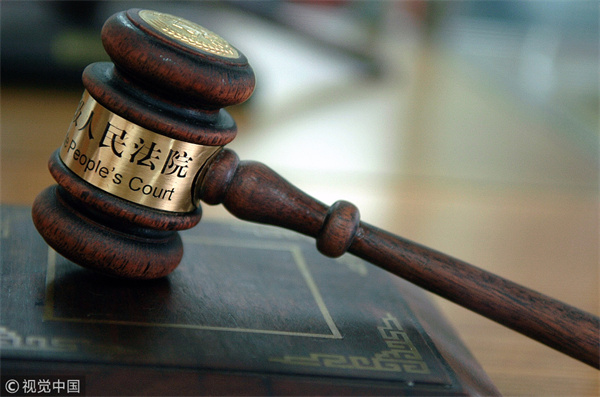Guidance to be issued on handling BRI-related cases

[Photo/VCG]
A judicial interpretation to identify and apply relevant foreign laws is expected to be released soon to help Chinese judges efficiently resolve disputes involving foreign parties, China's top court said.
With cooperation increasing between China and countries involved in the Belt and Road Initiative, China has seen a rapid growth in cross-border business exchanges as well as an increase in related commercial disputes, the Supreme People's Court said.
Gao Xiaoli, chief judge of the top court's No 4 Civil Adjudication Tribunal, highlighted the importance of finding the right foreign laws to handle international commercial cases and said that formulating a judicial interpretation to deal with such matters shows respect for the litigants, both from China and abroad, which will help strongly protect international transactions.
Formulating the interpretation was not an easy job, as the countries involved in the BRI have different legal systems, Gao said, revealing that a lot of time and energy was spent researching methods and procedures on identifying applicable foreign laws.
Thanks to the in-depth research, the judicial interpretation has been approved by the judicial committee of the Supreme People's Court and is ready to be issued, she added.
Last week, 12 cases related to the BRI and handled by Chinese courts were disclosed by the top court. With these, the top court has disclosed a total of 40 influential cases concerning the BRI since the initiative was proposed in 2013.
The disclosures aim to show the country's judicial determination and contribution to serving high-quality development and advancing the coordinated approach to promote the rule of law at home and in matters involving foreign affairs.
Over the past five years, China has increased efforts to build up its legal system to help resolve commercial disputes involving foreign parties and to help facilitate the BRI.
In June 2018, after the central leadership approved a guideline on establishing the Belt and Road International Commercial Dispute Resolution Mechanism and Institution, the top court opened its first international commercial court in Shenzhen, Guangdong province, and the second in Xi'an, Shaanxi province.
About two months later, the top court also set up an expert committee to serve as its dispute resolution think tank. So far, the two international commercial courts have heard 27 disputes, with litigants coming from countries such as the United States, Italy, Thailand and the Philippines, the top court said, adding that its expert committee has had 61 experts from 24 nations.
In the two courts, resolving international commercial disputes — through mediation, arbitration or litigation — depends on the litigants, meaning the three forms of resolution are integrated into one platform, which is China's innovative way of settling such cases.
To improve the quality of case handling, the top court said it has invited 10 influential international commercial arbitration institutes and two mediation institutes to join the platform.









